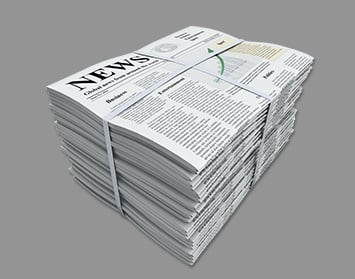Until recently tenants rarely worried about the performance and stability of their landlord. Times have changed. Cabi Developers was one of the first institutional real estate investment groups that purchased a southern California real estate portfolio from Arden Realty at the market peak, only to give the keys back to their equity partners about 18 months later. This debacle sent a shock wave through the marketplace. Corporate America’s downsizing and the credit crisis made it impossible to achieve projected rental rates that once validated high purchase prices. The commercial real estate market downward spiral has begun.
Tenants, now more than ever, must understand a landlord’s ability to perform per the lease. Should the lender foreclose on the property, the tenant may be at risk in several ways. Does the lease stay intact or will the tenant be on the street? How will the free rent period and tenant improvement allowance be honored, if at all? Who maintains the building? The list continues. While it is impossible to eliminate 100% of the risk if the landlord goes out of business, it is important for lessees to underwrite their business partner’s financial stability before executing a lease. The following items should be used as a guide to understand if a landlord can live up to its end of the bargain and what steps should be taken to reduce a tenant’s risk when leasing space:
1. Landlord Equity
Has the landlord’s equity evaporated, now owing more than the asset is worth? This is a bad sign and a red flag should pop up unless the landlord has deep pockets to weather the storm. Understand the current value of the building, the owner’s purchase price, and the loan amount.
2. Debt Stacks
Many times institutional investors cross-collateralize a loan on a single building with several buildings in their portfolio. This strategy helps lenders reduce their risk. Similar to item 1 above, if a property is cross-collateralized, a tenant must understand how the landlord’s entire portfolio is performing in order to accurately assess its risk. Should a single building in a portfolio be underperforming but the balance of the portfolio is solid, this situation is less risky for a tenant compared to the opposite scenario.
3. Subordination and Non Disturbance Agreement (SNDA)
This agreement is between the lender of the property and the tenant. The tenant’s lease remains in tact in the event the lender takes possession of the building. Challenging issues arise around the free rent period or tenant improvement allowance. Lenders often won’t agree to assume those obligations even if they foreclose on the asset. There are other avenues tenants may pursue should the lender become difficult when negotiating this agreement.
4. Offset Rights
This lease clause is fairly standard in today’s environment. Tenants have ability to fund their own tenant improvements or other monies owed by the landlord in lieu of paying rent should the landlord not perform.
5. Cash Position
What’s the landlord’s cash position? While this is quickly understood for a publicly traded REIT, it can be difficult when underwriting a private ownership of real property. However, most real estate professionals should have enough market intelligence to investigate this situation with private landlord entities and counsel their client accordingly. Cash strapped landlords are not a good sign.
6. Building Maintenance
A newer building or a building in stellar shape has low risk related to future issues revolving around the handling of building maintenance. Obviously newer buildings often require less repair work. An older building or one that contains deferred maintenance has high risk related to the handling of future maintenance issues. Building owners of older maintenance deferred properties having financial difficulties are a huge risk for tenants.
Imagine a tenant that executes a lease and during the tenant improvement process the landlord defaults on its loan and stops funding the construction. Now what? Does the tenant desire to spend its capital to finish construction? What happens to its free rent as stated in the lease? Who maintains the building? The bottom line is tenants must do their homework to understand the landlord’s performance ability under the lease.
While it does not appear that 50% of the buildings in San Diego will be foreclosed upon during the next 18 months, tenants must assess their risk when leasing space to ensure the lease remains intact, they have a place of business, their assets are protected, and a smooth transition occurs once the deal is closed and lease is set in place.
Scot Ginsburg is an executive vice president of Hughes Marino, a global corporate real estate advisory firm that exclusively represents tenants and buyers. Contact Scot at 1-844-662-6635 or scot.ginsburg@hughesmarino.com to learn more.








